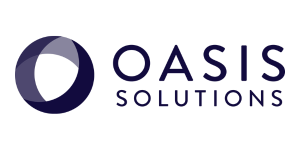
Since its inception, Excel has been a staple for most business organizations starting out; from tracking data to performance reporting and sales trends, executives have used Excel to store and manage their day-to-day operational data.
However, Excel can only take you so far - at a certain point, an application is outperformed and an organization outgrows it. Excel has been outpaced in terms of performance, security and efficiency by ERP software systems that centralize, organize and automate your data and processes across the organization.
When it comes to Excel vs. ERP, ERP is the clear winner. Below are a few key differentiators between Excel and ERP.
1. Human Error
Error is an issue dreaded by most organizations and this includes human error. Unfortunately, any system used by humans is vulnerable to some degree of user error. Excel is most prone to errors when it comes to inputting information. If you’ve ever tried for hours to manipulate data in an Excel spreadsheet, you know the software is especially prone to user error. According to research, more than 90% of spreadsheets contain errors, most of this is due to the simple lack of integration and centralization in Excel.
Even if various departments across your organization require the same data, they are probably using different spreadsheets. This is not only time-consuming and frustrating - it compounds the potential for errors, which becomes a risk each time a user populates a cell.
With an ERP system, these kinds of mistakes are eliminated. An ERP system provides a single source of information which can be accessed from any location and eliminates the need for manual data entry so that time can be freed up to focus on other tasks.
2. Centralized Control
An ERP system provides a single, unified source of truth based upon reliable data. With ERP software, you have one version of information and all users are accessing it in real time.
With Excel, this isn’t the case - employees are making changes to a spreadsheet, saving new versions and sharing it. It’s impossible for you to know if your team has the most updated version, is working from the correct dataset, or if the information they have is accurate.
The associated risks are often minor; other times the inaccuracies can be detrimental. This is especially the case when it comes to production and supply chain management - working off old or error-prone data unfortunately skews your entire operation. This emphasizes the importance of ERP software for manufacturers.
3. Productivity
Using an Excel system requires manual data entry at every stage. In turn, this requires countless man hours devoted to inputting information into the system. Rarely is an Excel spreadsheet adjustment a quick manipulation; most spreadsheets are dozens if not hundreds of lines long, with user input required for almost every single cell.
On top of that, if your team needs a new report, they’re required to make a new sheet - even if they’re working from a template. The only way to effectively manage your inventory, for example, is to task someone with manually updating the data on a regular basis.
Then, there’s the issue of accidentally deleting an important spreadsheet - retrieving a deleted file can take forever, if you’re able to achieve it at all.
An ERP system allows multiple users to operate the system, whether remotely or locally. Information from multiple sources can be stored and viewed, eliminating the need for manual data entry.
4. Collaboration
An Excel file can be shared via email or uploaded to a shared file location but for the most part, these spreadsheets are handled separately from the rest of your organization.
If your company has invested in a more modern cloud-based or mobile version of the Office suite, that doesn’t mean collaboration is seamless. The system can still freeze up if multiple users attempt to access a spreadsheet at the same time.
On the other hand, collaboration is a central tenant of ERP software - specifically with a cloud ERP platform, your entire organization’s workforce can collaborate with ease, whether onsite or remote.
5. Real-Time Insights
An Excel system requires you to upload data manually and if a change occurs, the Excel spreadsheet will not automatically update. A user must go into the file and make necessary changes - this can lead to lost data or duplicated data entries, as well as lagging insights into sales, orders and metrics.
Once your organization implements an ERP system, you will have access to real-time data insights, instantly viewable via a central dashboard. Uses can easily search for and find the information they need and then share those insights across departments. Real-time reporting is essential for any fast-growing organization to make informed decisions.
If you’re still relying on Excel or another spreadsheet-laden system to handle your day-to-day operations, it’s time to consider an ERP implementation. While Excel may be getting the job done now, it will not offer you the bandwidth of an ERP system and it does not have the ability to support a fast-growth company.
In Excel vs. ERP, ERP wins in all categories: enterprise collaboration, user control and data reliability. Ready to make a move? Schedule a free analysis with an experienced Oasis consultant
Related Articles:
Risks Of Trusting QuickBooks In Your Business
The New Business Reality: Modern Business Management Software


